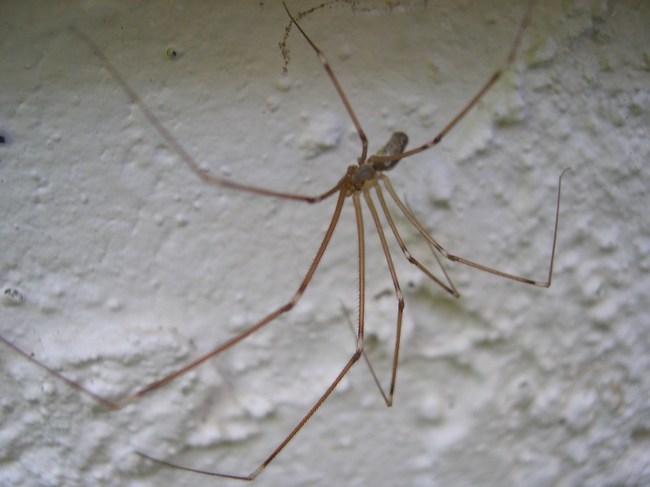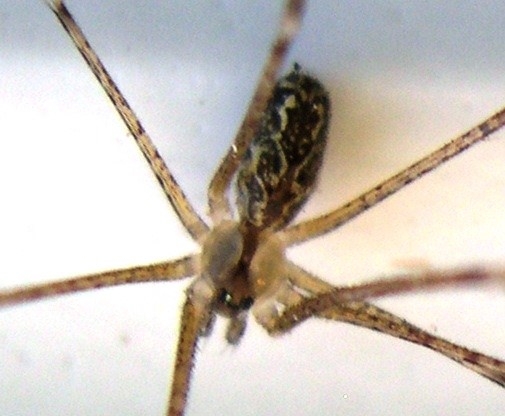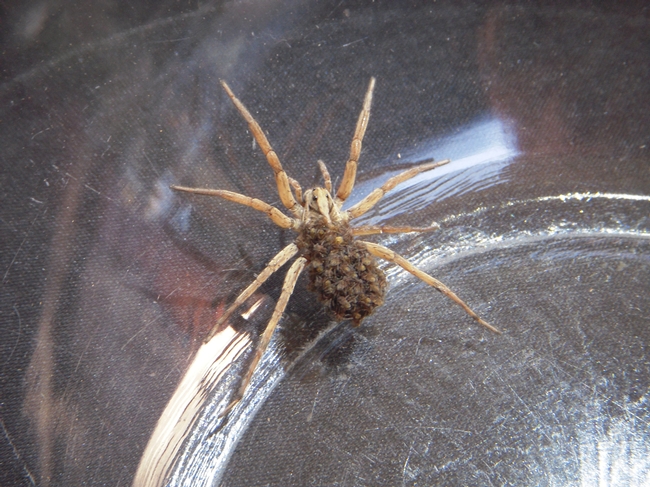Rethinking Spider Legs
Spiders. Whether dangling or leaping, scurrying or creeping, spiders usually make me flinch — indoors and out. I don't know why, since I was raised in the country where spider webs stretched across rows of orange trees and rose arbors. I freely skipped right on through the large circular webs with no concern about that big black and yellow spider perched in the middle that I had noticed the day before.
Truth be told, when it comes to encounters with spiders, most of us move out of their way. We seldom give thought to the mechanics of their movements. Arachnoid locomotion and propulsion are topics I never considered until now. And from my cursory research, I realize I've skimmed only the surface of the way spiders move.
Many of us know the lyrics to the song about the “itsy-bitsy spider” that climbed its way up the water spout, but have you ever wondered how. How does a female wolf spider of the Lycosidae family with countless babies riding atop her back pull that extra weight upward and onward day after day? And what about the marbled cellar spider (Holocnemus pluchei) nicknamed Daddy-Long-Leg? How does it bob up and down to frighten away prey and not damage its thin tiny segmented legs?
What peaked my attention to rethinking spider legs is a recent article in Wall Street Journal, “Spiders' Legs Are Hydraulic Masterpieces.” I learned a spider's exoskeleton contains no internal bones. Muscles exist for flexing and bending the legs inward, but no extensor muscles exist to propel the legs outward again. To extend the legs, spiders depend upon hydraulics. All eight legs are attached to their mid-section (cephalothorax) and depend upon hemolymph (which is mostly water) being pushed (pressurized) into the leg which forces the leg joints outward. This amazing hydraulic system gives jumping spiders the ability to spring up over 50 times their body length. Hydraulic pressure also helps the female wolf spider lug the brood on her back and gives Daddy-Long-Legs an ability to bounce as if he's on a trampoline.
In addition to renewed admiration for arachnids' ability to move, I also have a soft spot for them. The next time I see a dead spider curled up in a ball, I'll think about its marvelous hydraulic system that is so vulnerable to being pierced. One puncture to the mid-section or a leg and the pressure drops, rendering the spider immobile and eventually leading to its demise.
To learn more about spiders and how they move, consult the source list below. Betcha you will never look at spider legs the same again.
Sources:
https://www.wsj.com/articles/spiders-legs-are-hydraulic-masterpieces-11567088612 - (Article: Spiders' Legs Are Hydraulic Masterpieces by Helen Czerski, August 31 - September 1, 2019, WSJ)
https://www.realclearscience.com/blog/2013/02/spiders-their-amazing-hydraulic-legs-and-genitals.html - (Article on: Spiders, and Their Amazing Hydraulic Legs and Genitalia by Ross Pomeroy, February 04, 2013)
https://jeb.biologists.org/content/215/4/578 - (PDF available on Research Article: Hydraulic leg extension is not necessarily the main drive in large spiders from Friedrich Schiller University, Institute of Sport Science, Motion Science, October 31, 2011)







Posted by Anne E Schellman on November 14, 2019 at 1:03 PM